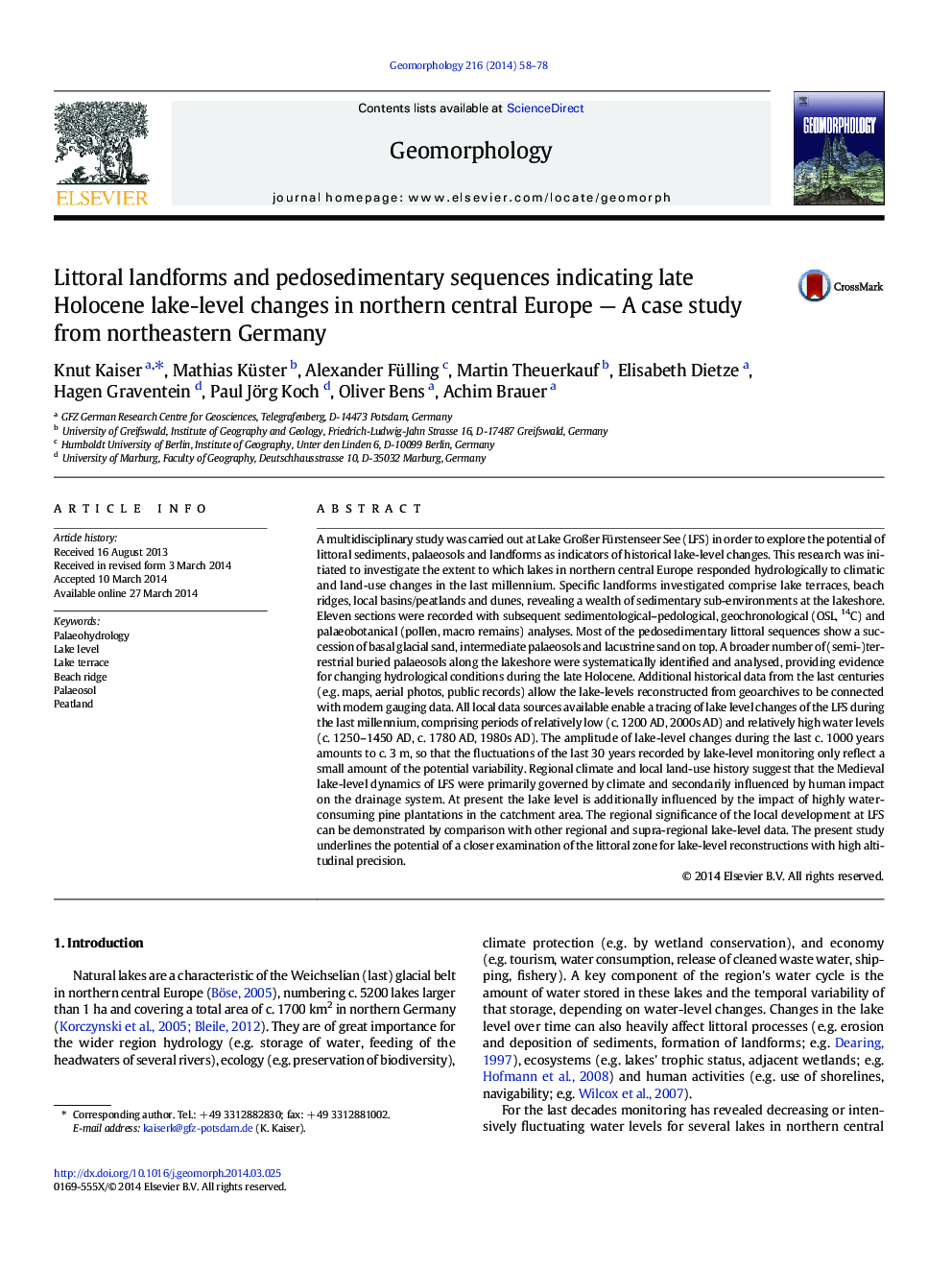| کد مقاله | کد نشریه | سال انتشار | مقاله انگلیسی | نسخه تمام متن |
|---|---|---|---|---|
| 4684515 | 1635433 | 2014 | 21 صفحه PDF | دانلود رایگان |

• Littoral deposits, soils and forms are explored as indicators of lake-level changes.
• Sedimentological, geochronological, palaeobotanical and gauging data analyses.
• Tracing of lake-level dynamics of the last millennium.
A multidisciplinary study was carried out at Lake Großer Fürstenseer See (LFS) in order to explore the potential of littoral sediments, palaeosols and landforms as indicators of historical lake-level changes. This research was initiated to investigate the extent to which lakes in northern central Europe responded hydrologically to climatic and land-use changes in the last millennium. Specific landforms investigated comprise lake terraces, beach ridges, local basins/peatlands and dunes, revealing a wealth of sedimentary sub-environments at the lakeshore. Eleven sections were recorded with subsequent sedimentological–pedological, geochronological (OSL, 14C) and palaeobotanical (pollen, macro remains) analyses. Most of the pedosedimentary littoral sequences show a succession of basal glacial sand, intermediate palaeosols and lacustrine sand on top. A broader number of (semi-)terrestrial buried palaeosols along the lakeshore were systematically identified and analysed, providing evidence for changing hydrological conditions during the late Holocene. Additional historical data from the last centuries (e.g. maps, aerial photos, public records) allow the lake-levels reconstructed from geoarchives to be connected with modern gauging data. All local data sources available enable a tracing of lake level changes of the LFS during the last millennium, comprising periods of relatively low (c. 1200 AD, 2000s AD) and relatively high water levels (c. 1250–1450 AD, c. 1780 AD, 1980s AD). The amplitude of lake-level changes during the last c. 1000 years amounts to c. 3 m, so that the fluctuations of the last 30 years recorded by lake-level monitoring only reflect a small amount of the potential variability. Regional climate and local land-use history suggest that the Medieval lake-level dynamics of LFS were primarily governed by climate and secondarily influenced by human impact on the drainage system. At present the lake level is additionally influenced by the impact of highly water-consuming pine plantations in the catchment area. The regional significance of the local development at LFS can be demonstrated by comparison with other regional and supra-regional lake-level data. The present study underlines the potential of a closer examination of the littoral zone for lake-level reconstructions with high altitudinal precision.
Journal: Geomorphology - Volume 216, 1 July 2014, Pages 58–78